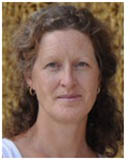 This month signals a critical moment for the future of global health financing as high-level political representatives meet in Addis Ababa for the Third International Conference on Financing for Development to discuss how the new Sustainable Development Goals (SDGs) will be funded. Current trends in stagnating spending on aid and a finance-driven rhetoric risk abandoning the achievements of recent decades.
This month signals a critical moment for the future of global health financing as high-level political representatives meet in Addis Ababa for the Third International Conference on Financing for Development to discuss how the new Sustainable Development Goals (SDGs) will be funded. Current trends in stagnating spending on aid and a finance-driven rhetoric risk abandoning the achievements of recent decades.
Arguably, some of the greatest gains in global health during the past 15 years can be attributed to initiatives such as the Global Fund to fight Aids, Tuberculosis and Malaria. The Global Fund, with its well-focused goals and multi-stakeholder governance mechanisms, created results-orientated funding that prioritised effectiveness, improved health outcomes and positively influenced national and international policies. Importantly, its inclusion of civil society as a national “watch-dog” safeguarded the pertinence of health interventions in recipient countries. The Global Fund and other initiatives such as Gavi, the vaccine alliance, broke with tradition and funded critical interventions including recurrent costs such as health staff, drugs and renewable medical commodities. These initiatives, which have stemmed from the Millennium Development Goals (MDGs), galvanised global attention and funding on fighting killer diseases and ill health.
These important advances are now being eroded. The continued use of gross national income to allocate official development assistance (ODA), which includes development assistance for health, has potentially catastrophic effects for over 70% of the world’s poor who live in the 105 countries classified as middle-income. The risk with the current moves by donors to change modalities and channels of assistance to countries in this bracket could see the health needs of people living in these countries deprioritised with national health expenditure unable to replace external support. Over 50% of the humanitarian medical programmes of Médecins Sans Frontières (MSF) are in ‘middle-income’ countries such as, Sudan, Kenya and South Africa and we are alarmed by the disparity between global rhetoric and the reality faced by the populations we serve.
Economic proxy measures of human development obscure population health needs and ignore existing inequities. So called middle-income countries have little in common apart from the negative impact of their reclassification on population health. Upward trajectory on the income ladder increases national health-care costs as prices of vaccines, drugs and medical commodities rise due to less preferential and more arbitrary pricing. Additionally, different international trade rules and regulations come into play, including pressure for more restrictive trade agreements such as TRIPS Plus.
While recent reports demonstrate that most low and middle-income countries have increased government health expenditure over the past decade, experts agree that it is overly optimistic to translate this into a model of autonomous national health spending without external support for the foreseeable future. It is estimated that 14 countries transitioning out of Gavi support (as they passed the income threshold rendering them ineligible) will be obliged to increase health expenditure on vaccine costs alone from US$8 to US$90 million by 2018. Furthermore, while there is value in pressuring countries to improve domestic health spending, the aim should be to expand on improved health outcomes rather than to make-up for shortfalls in donor funding. Attempts to compensate for dwindling donor funds are already leading to the re-emergence of barriers of access to health care such as user fees and increased out-of-pocket payments. Worryingly, in countries such as South Africa and Thailand, civil society organisations, which have been the cornerstone of health care provision and national mobilisation for better health over the past decade, are seeing their lifeline of international funding cut off.
Reduced grants and progressive exclusion from global health initiatives such as Gavi or the Global Fund risk leaving middle-income countries with widening health gaps, reversals in health gains and struggling to maintain basic services. For instance, the majority of people living with HIV/AIDS reside in countries now classified as middle-income, such as Kenya, Swaziland and South Africa. These countries will struggle to cope with their HIV/AIDS disease burdens if left alone to fund anti-retroviral treatment. Likewise, there is a serious mismatch between donor country classification and the burden of multi-drug resistant tuberculosis (MDR-TB), with the highest incidences reported in middle-income countries in Eastern Europe and Central Asia, most of which are either transitioning out or expected to transition out of Global Fund eligibility.
In the present dialogues around financing for development, underlying issues, such as the stagnation of development assistance for health are rarely discussed openly. This stagnation, combined with traditional donors stepping back from previously agreed aid targets, such as 0.1% for development assistance for health, seems to indicate an overall lack of resolve for global solidarity in health. The forthcoming SDGs, which will replace the MDGs, widen and diversify the aid agenda, with more sectors requiring financial support from essentially the same envelope. International calls for universal health care and rhetoric to “leave no one behind” appear to contradict the potential negative impact of present donor policy.
With traditional donors needing to appease tax payers back home, the mirroring of these donors’ policies in global health initiatives and the subsequent cost to populations in need could soon be sadly only too apparent. As the delegates gather in Addis Ababa to decide the future of aid financing, they should consider that health needs rather than finance indicators need to remain central to funding decisions if the gains in global health of the past 15 years are not to be lost.
Áine Markham, analysis and advocacy unit, health access team, Médecins Sans Frontières.